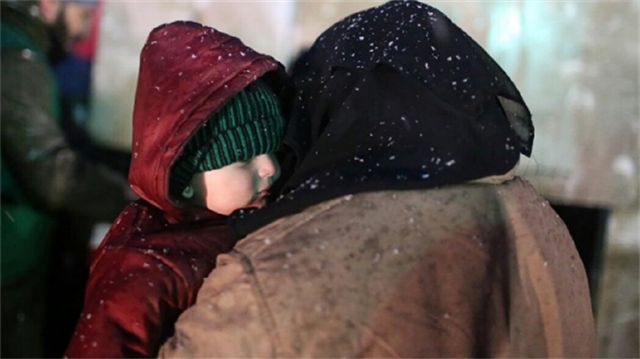
Evacuees who have escaped blockades and massacres in Aleppo are now facing cold winter conditions in Idlib
Aleppo has endured cluster bombs, drum bombs, phosphor bombs, ballistic missiles and all forms of conventional attacks for the past five years. Despite efforts to besiege the city, the symbol of the Syrian revolution, Aleppo, was surrounded only three months ago.
Like Damascus, Homs and Daraa, Aleppo was subjected to suffering through starvation and poverty.
A ceasefire agreement was reached under the leadership of Turkey in order to rescue the Aleppans, who have been under blockade since November 15, and were subjected to the brutal massacres of Assad's forces and Iran-backed Shiite militias.
Civilians trapped in eastern Aleppo were evacuated to Idlib, near the Syria-Turkey border.
In a desperate attempt to escape the blockade and massacres in Aleppo, civilians are faced with a new struggle for survival in Idlib. Winter has taken a hold of Idlib, greeting Aleppans with a blanket of snow.

The cold weather conditions have proven to be yet another hardship Aleppans must endure for survival.
Tent cities established by non-governmental organizations (NGO) have been covered in white. NGOs have been striving to provide warm shelter for Aleppans, especially children.
Once the 70-acre Kemmuneh camp in Idlib and the two other camps under construction are completed, 80,000 refugees fleeing their homes will be able to take shelter.
Separate relief convoys from every province of Turkey are struggling to meet the needs of Aleppans who have escaped from the Assad's tyranny and reached Idlib. The refugees are in need of more winter goods, blankets and tents.






